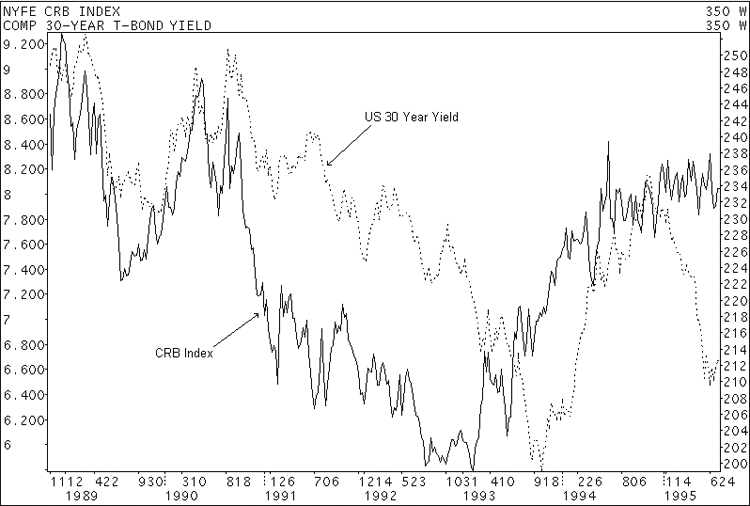Tips on Technicals - Overlay
| Indicator type: |
Display |
| Used to: |
Compare the trading activity of two or more items as individual items on the same chart |
| Markets: |
All cash and futures, not options |
| Works Best: |
All markets and time frames |
| Formula: |
N/A |
| Parameters: |
Relative overlays are used to compare unlike items, such as commodity prices and interest rates or a stock and its on-balance volume.
Absolute overlays are used to compare similar items with similar prices, such as two contract months for the same futures contract.
Expired futures overlays are used to compare futures contracts from different times, such as December 1995 and December 1991. They can be aligned based on days with the year ignored, or on expiration (December 1991 and June 1989).
|
| Theory: |
Overlays are used to compare instruments without losing the characteristics of their trading. In contrast, spreads and ratios display the result of a the comparison as a new item without showing the underlying components. |
| Interpretation: |
Absolute overlays can reveal actual price differentials and targets while relative overlays are best used to compare trend direction and changes. Expired future overlays allow the same analysis but also allow for the manipulation of time so that items that never existed at the same time can be used. |

Over the seven year span of this chart, interest rates in the US rose and fell relative to inflation as measured by the CRB Index. Both fell from 1988 through 1992. Early in 1993, the CRB Index began to climb and later that year interest rates moved higher. During 1995, inflation was steady but interest rates fell. This sets up a divergence with interest rates and a possible trading opportunity.




